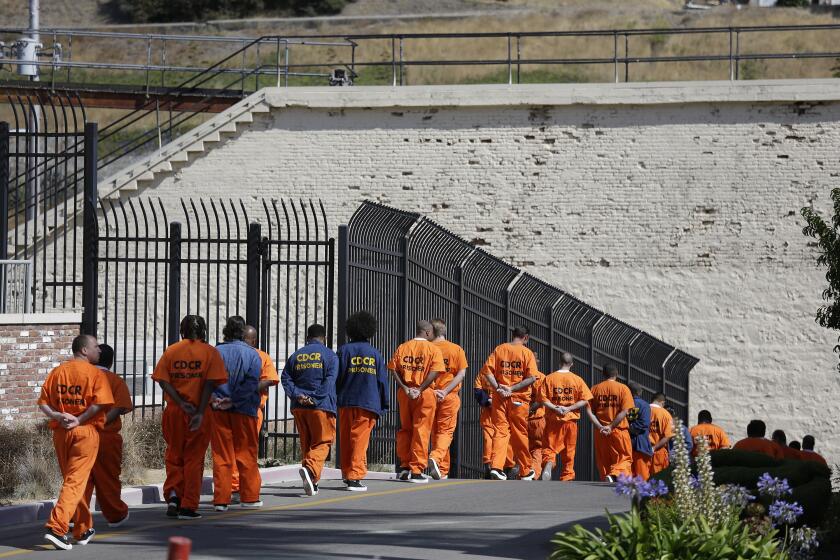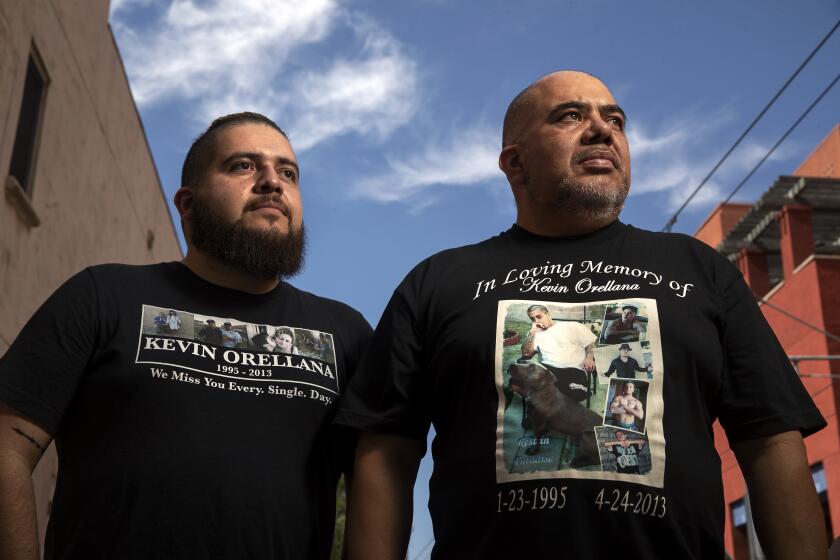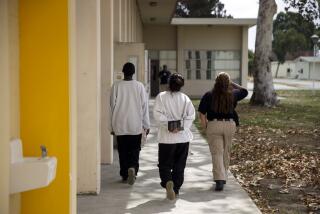12 years after being locked up as a teen, he finds mercy from the D.A. who put him there
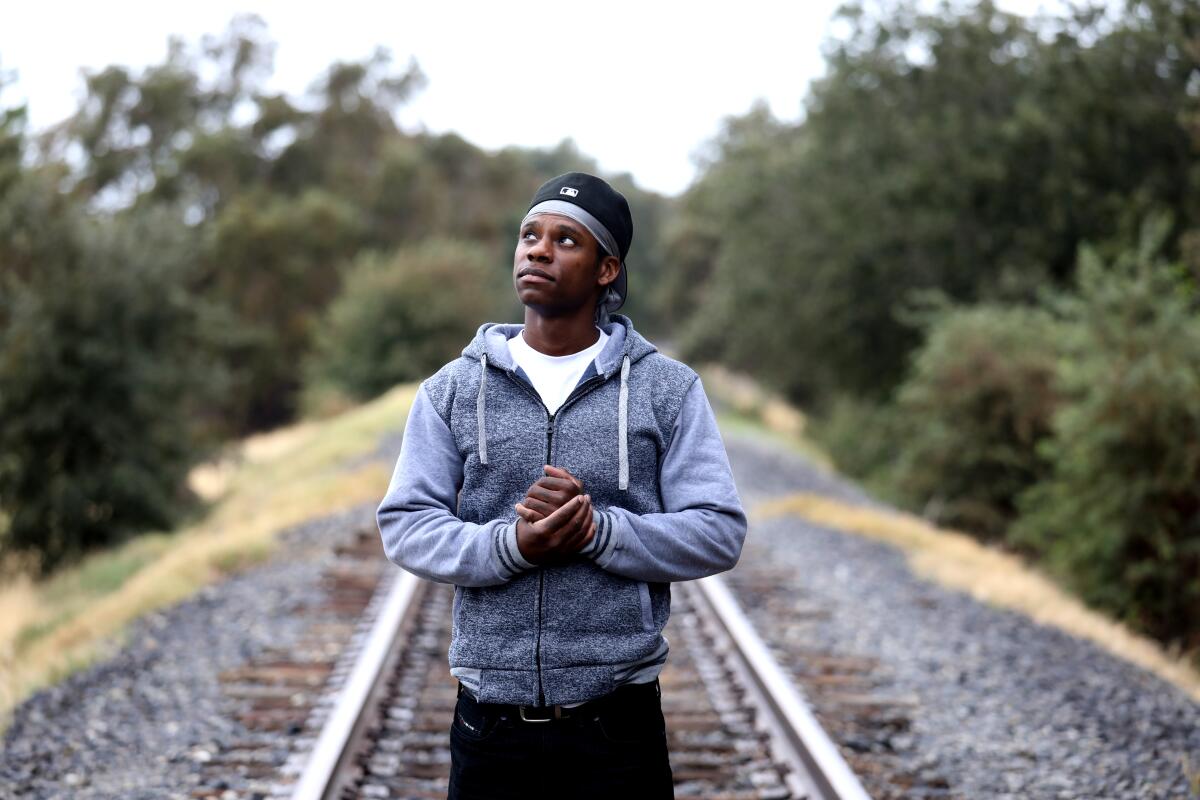
- Share via
WEST SACRAMENTO, Calif. — In the lonely monotony of High Desert State Prison, there were no visitors and little mail for Renwick Drake Jr., so the letter was a curiosity when it arrived in the summer of 2020.
It told Drake about a new law meant to undo too-harsh sentences. Maybe, it said, the district attorney would take another look at his case after 11 years of incarceration.
But maybes are dangerous in prison, dealers of counterfeit hope. The letter felt like another false flag from the system that had put Drake behind bars at age 15, when he was a skinny skater who thought he knew everything until, too late, he realized he knew nothing. “Little Ren” to the family he left behind, he’d been inmate No. AL9471 ever since.
A letter wasn’t going to get him out, he thought, and neither was the D.A. who put him here. There was only patience and himself.
Drake put the letter aside and went back to serving his time. He had 12 years to go.
But the maybe had hold of him.
::
Yolo County Dist. Atty. Jeff Reisig was three years into his first term when Drake was arrested in 2009.
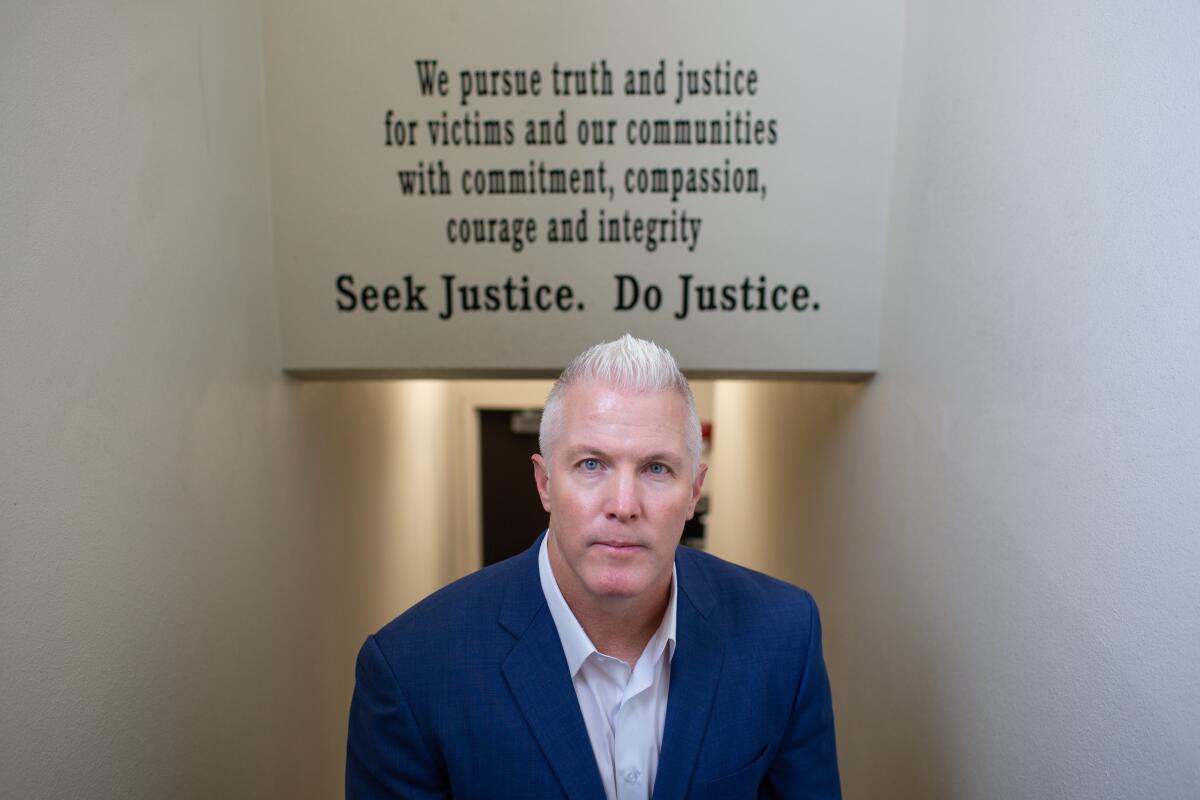
Reisig hadn’t planned on being the top cop of this semiagricultural county west of Sacramento. His boss came into his office one Friday afternoon to announce he was retiring and wanted Reisig, a prosecutor, to run.
Reisig sometimes wonders how life would have been if he wasn’t a politician. Easier maybe, less stressful. There were a lot of haters, a lot more to the ugly underbelly of politics than he had realized going into that initial race. It was so bad, he said, that the campaign broke up his first marriage.
Gov. Gavin Newsom has acted on bills aimed at reducing prison sentences for people convicted of drug- and gang-related crimes, despite concerns from prosecutors that the measures will hinder efforts to protect Californians.
A former bodybuilder with a linebacker’s shoulders and close-cropped gray hair that makes him look like Pixar’s Buzz Lightyear, Reisig had come to Yolo to study the business of agriculture at UC Davis. Growing up in Gilroy, he’d worked on a flower farm owned by his sister’s husband, spending more time in the office going over numbers than among the larkspurs and belladonnas. But at Davis, he found the law more interesting than crops. He landed an internship with the Yolo County public defender’s office and went to law school.
He had “a rebellious nature” and relished being the underdog in the courtroom, Reisig said, and “always had a little bit of a ‘fight the man’ streak.”
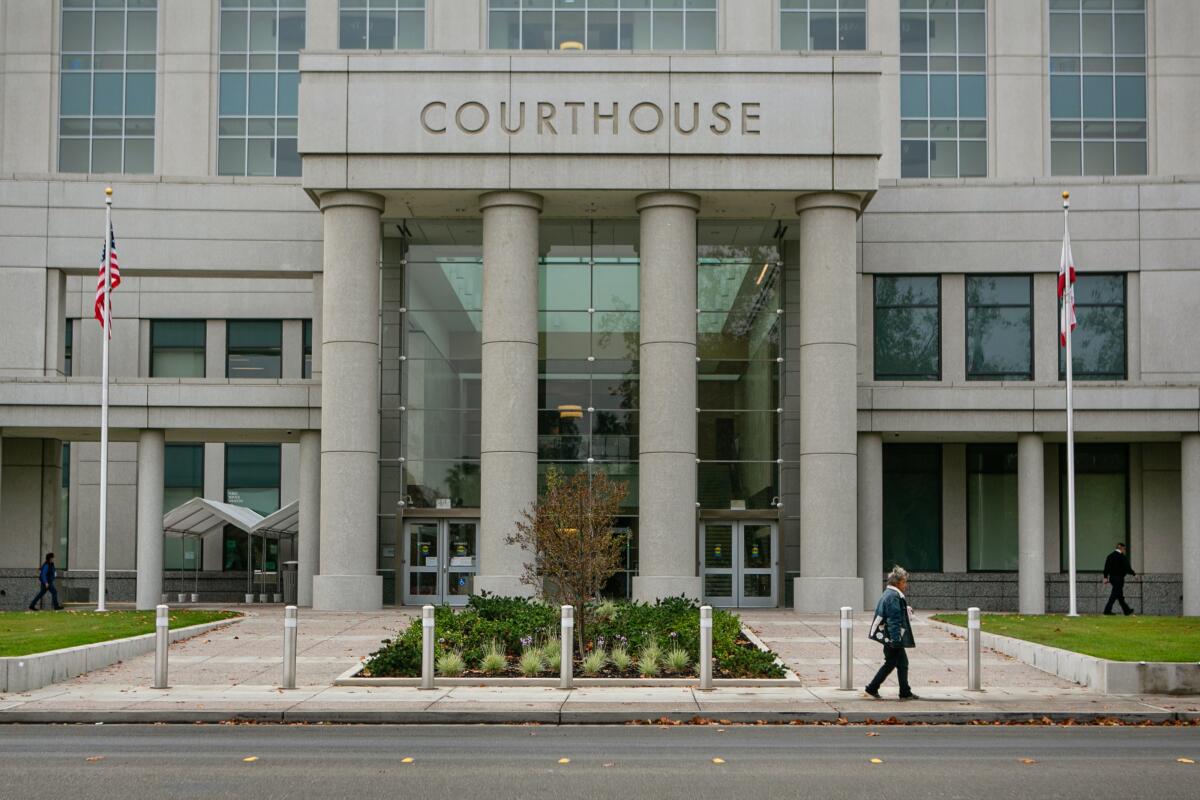
At the same time, it was an education in how the justice system really worked. “Being a public defender, all you do is go in and shoot holes in the wall,” Reisig said. To have an effect, a dramatic effect, you had to be a prosecutor, he thought.
So, in 1997, after a boring stint in agricultural law, he applied to the Yolo County district attorney’s office at the height of California’s tough-on-crime era.
In 1994, a year after 12-year-old Polly Klaas was kidnapped from her home and killed by a felon not too far from Yolo, then-Gov. Pete Wilson signed the “three strikes” law, propelled by the activism of Polly’s father. In 2000, voters passed Proposition 21, increasing penalties on youth offenders and allowing more children to be tried as adults.
Reisig felt for the victims of violence, he said, at a time when violence seemed rampant. He went after drug dealers, he went after thieves, he went after gang members with a zealousness that brought controversy. He won prosecutor of the year awards multiple times.
Reisig said he tried to balance his duties with what he learned as a public defender, but the “overwhelming message that young prosecutors were getting at that time throughout California was that criminals are nails and we were the hammers. … Hammer away.”
::
For Drake, Nov. 20, 2009, would be a wrong place, wrong time, wrong decision day. He did not like math, so that Friday, he cut class, like he had before.
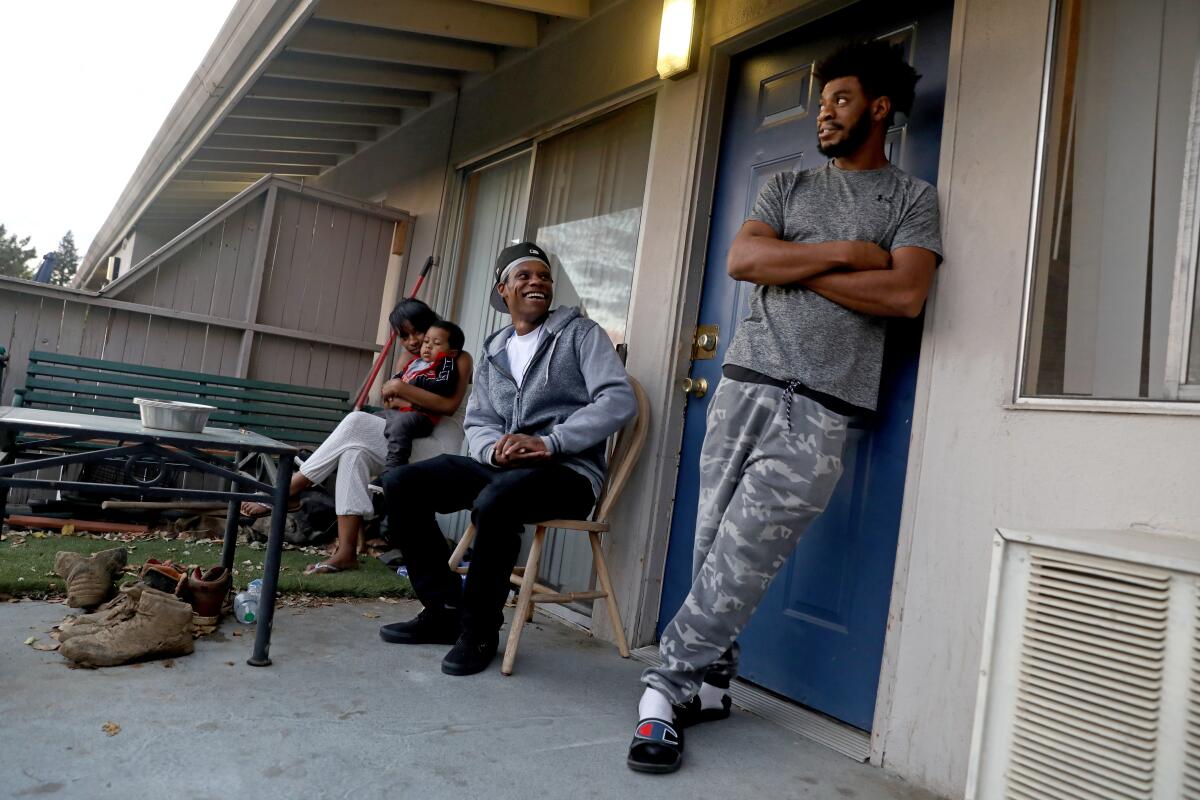
He was the new kid in 10th grade and missed friends back in the San Gabriel Valley, where he’d gotten in enough trouble to land himself on probation, according to court records. His family had moved a few months earlier from Rowland Heights to West Sacramento because his father, Renwick Drake Sr. — Big Ren — got a good job at an Oakland car dealership.
Little Ren was rebellious and independent, and maybe a little adrift. His mother, Rachel Frye, recalled that their house could be chaotic and crowded.
“I was lost,” Drake said. “I made it hard on myself because I was trying to be grown up too soon.”
The day he skipped math, he got caught and his parents were called into the principal’s office. Big Ren told him to go straight home from school and stay there, but he didn’t. He went out with his skateboard — he was good enough to dream of getting sponsored — and ran into a 16-year-old gang member he had met weeks before.
The boys went to a skate park, where three other teens were hanging out — one had just been paid and had an envelope full of cash. The gang member pulled out a .22-caliber handgun and pointed it at the head of the boy with the money. Drake reached into the victim’s pockets and took $240 and his cellphone.
The gang member fired a shot as he and Drake ran off, but the victims gave chase thinking the revolver was a cap gun, according to court documents. The gang member fired again, but the boys caught up at a parking lot and demanded the phone back. Drake slid it to them across the pavement, but the gang member handed him the weapon and told him to shoot. Drake pulled the trigger, hitting the trees above the victims.
Drake was arrested that day. He remained in a juvenile lockup until he was convicted in 2012 by a jury and sentenced to 24 years for robbery with an enhancement for using a gun — an improvement, he believed, from the deal Reisig’s office had offered: 39 years. The gang member received more than 37 years.
When he was transferred at age 18 from county jail to state prison, he got some advice from Big Ren: Man up. Drake remembers riding the bus to the prison in Tracy and asking the men shackled around him what to expect. He got no answers. He was later sent to High Desert in Lassen County north of Lake Tahoe, remote and too far for visitors.
I was lost. I made it hard on myself because I was trying to be grown up too soon.
— Renwick Drake Jr.
Isolated and a kid in a world of violent men, he figured out what he needed to do to survive. He kept his head down, stayed in his lane, as he puts it. He drew portraits of people he met and those he remembered. Having earned his GED while in juvenile hall, he started college computer courses.
He also read a lot: thrillers by John Grisham until he grew bored with them, language books to teach himself Spanish, then self-help books that all said the same thing — take responsibility.
In 2016, he started a self-help group, Truly Redefine Yourself (TRY), leading weekly workshops focused on running life like a business — thoughtful, methodical, drama-free. But mostly he figured out what it meant to man up, past the fear, past the anger.
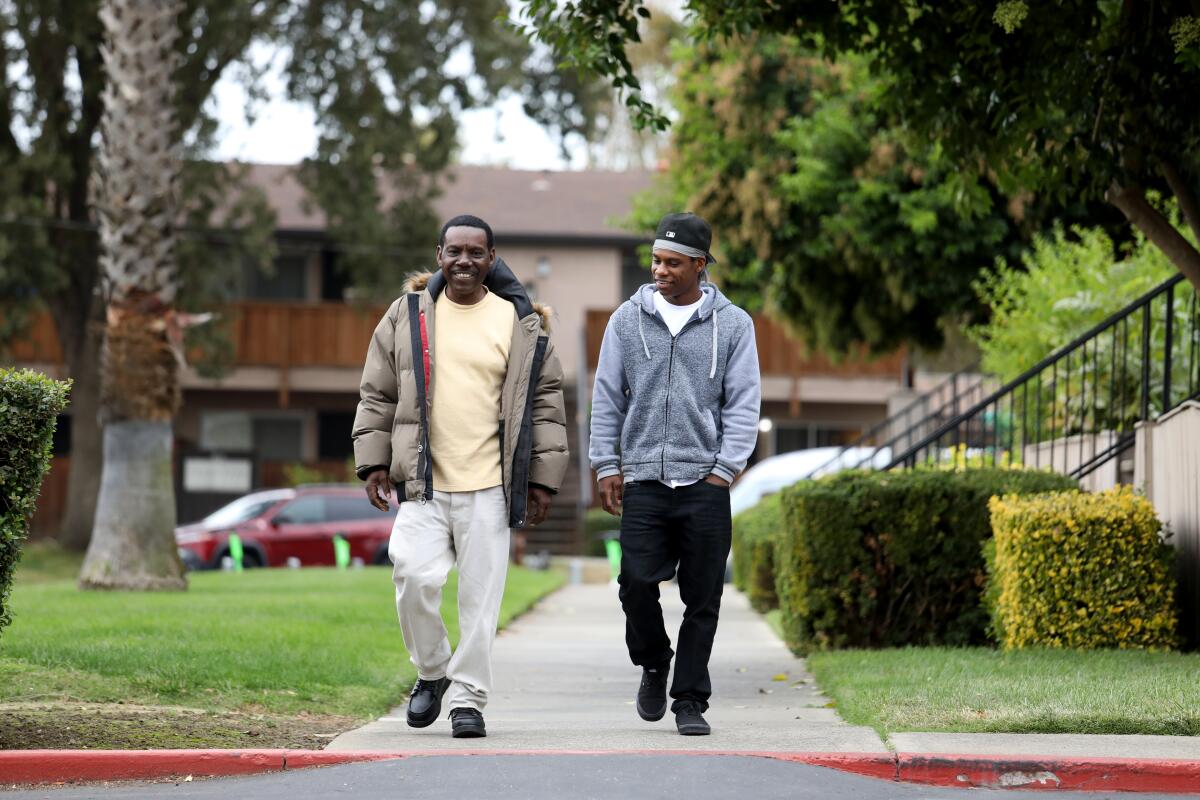
The rebellious kid who hated being still and thought he knew everything learned patience. He practiced, hour by hour, day by day, how to be quiet, even in his mind. He learned to physically be motionless, sitting like a statue with only his thumbs twirling round and round each other, the only sign that patience is hard, a discipline.
He stayed out of trouble and focused on freedom, receiving only four write-ups in 12 years. He tried to avoid anyone or anything that would keep him locked up one extra day.
But the letter from Yolo County gnawed at him. He’d ignored a similar letter more than a year earlier. But what if?
He looked up the new resentencing law and wasn’t impressed. It gave the district attorney the power to ask for his sentence to be reduced. What D.A. did that?
He asked a few friends what they thought. It can’t hurt, said one.
Drake wrote back.
::
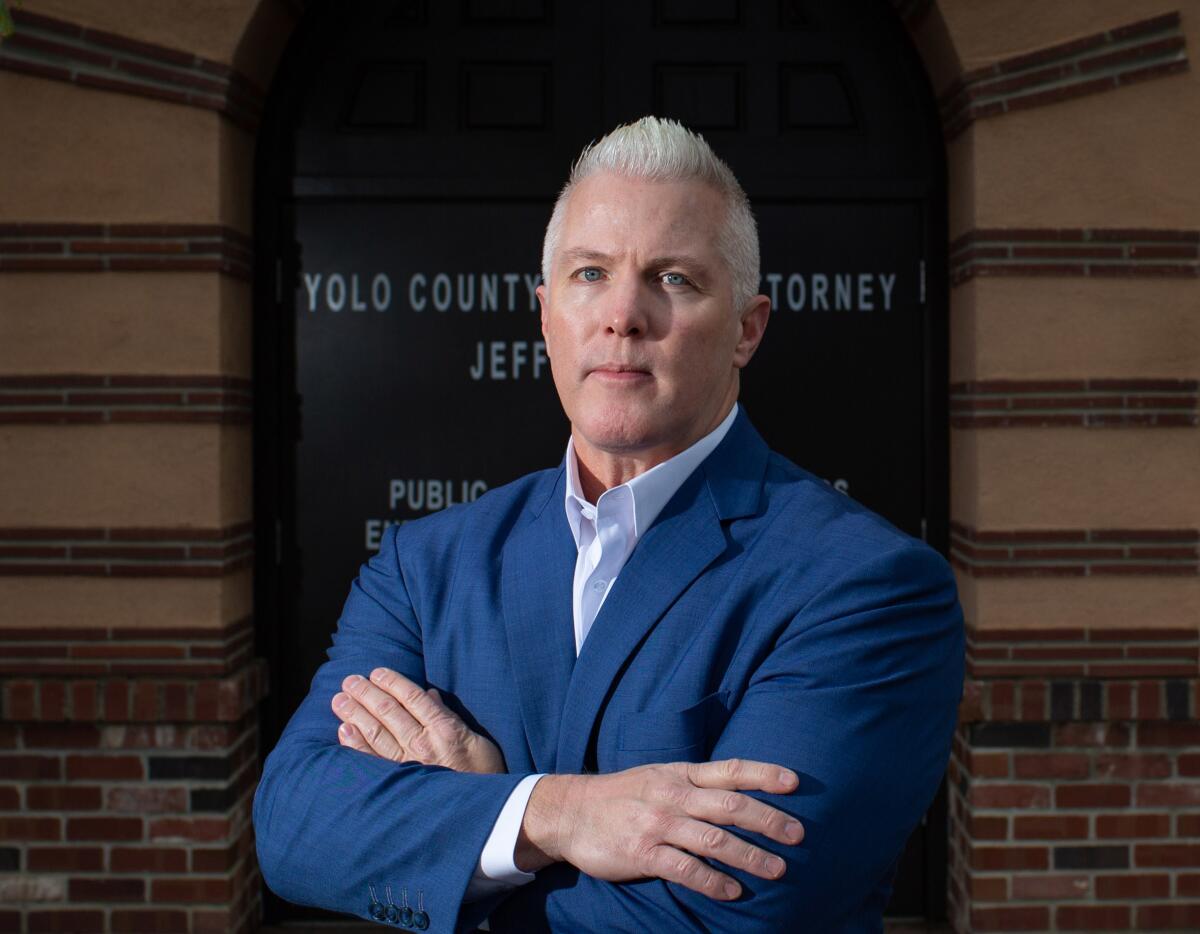
Reisig was in his second term when Drake was convicted, and he was resentful. He had been for a while, ever since his vicious first campaign, one that devolved into nastiness and left Reisig with a bitterness he couldn’t seem to quell.
“The whole experience scarred me,” he said. Constantly under scrutiny and attack, “I had to figure out, how do I survive in this job and not let it eat me alive?”
He realized, Reisig said, that he had to forgive the people he felt had wronged him, professionally and personally. He thought about his mother, a public school teacher who taught at a continuation high school, filled with people looking for another shot.
“She had this deep belief in this ability for people to be redeemed, for people to get second chances and turn it around, and she talked about it a lot,” Reisig said. She also believed, he said, “that everybody can choose their destiny, and sometimes they need some help along the way to figure it out.”
At the same time, the justice system was changing. There was a small group of prosecutors examining their roles and asking what they could do to reform the system from within. It interested Reisig, but he didn’t see himself reflected in their political ideologies.
But the guy who liked poring over the numbers on the flower farm studied statistics from his department and saw that the data on recidivism were “terrible,” especially with drug-related offenses. People he was convicting “for a dime bag of dope or a petty theft” were serving long sentences but quickly reoffended after release.
“I was looking at it thinking, ‘God, these people are totally sick and addicted and they weren’t hurting anybody, violently anyway, and we are sending them off for double-digit terms.’”
Reisig has two nephews who were caught up in drugs. One died of a drug-related cause. The other has been addicted to heroin and living on the streets for eight years, he said. They seldom leave his mind.
In 2012, he visited a neighborhood court started by Kamala Harris when she was district attorney of San Francisco. It centered on restorative justice, the idea that victims, perpetrators and communities could work together on a kind of redress that served everyone involved by rehabilitating offenders and helping them make amends to, or at least peace with, those harmed — without jail. Reisig started a similar program in Yolo County, increasingly emphasizing redemption rather than punishment.
His efforts, he said, have occasionally earned him jabs from others in the district attorney’s office, including, “Here comes Jeff in his Birkenstocks.”
::
Prisons are filled with thousands of felons whose offenses would net different punishments if committed today — girls whose convictions are tied to being forced into sex trafficking, offenders who have served their main sentence but are working through years of enhancements, nonviolent offenders who took their addictions and mental illness with them behind bars.
I don’t care which side of the aisle you are on. Can’t we agree that people can earn a second chance?
— Yolo County Dist. Atty. Jeff Reisig
These days, a teen probably wouldn’t be charged as an adult as was Drake. And that teen almost certainly would not be sentenced to decades in prison.
But little has changed for those convicted before reforms went into effect, in part because there are few ways to reduce a sentence once a judge closes a case. Only state prison officials and a short list of others had the power to recommend an early release.
L.A. County Dist. Atty. George Gascón was elected, in part, on a promise to stop trying juveniles as adults. But as some seek to be resentenced under a 2017 California law, that stance has frustrated some crime victims.
“Prosecutors have all the power to send people to prison but no power to get them out,” said Hillary Blout, a former prosecutor.
In 2018, California passed a first-in-the-nation law, dreamed up by Blout, that effectively gives prosecutors the power to undo their harshest work if they believe the outcome no longer serves justice.
Under the law, only about 100 people — nearly all men — have seen their time cut so far, said Blout, now executive director of the nonprofit For the People. Persuading prosecutors to second-guess their records has been a tough sell for many reasons — the effort to vet a candidate for early release, money to fund the work, the unpopularity of letting people out of prison in an era when some crime is rising.
In the hopes of putting more energy in the law, this year’s state budget includes $18 million for a pilot project to help prosecutors seek out cases that may warrant another look in nine counties: Yolo, Los Angeles, San Diego, Santa Clara, San Francisco, Riverside, Contra Costa, Merced and Humboldt.
In L.A. County, Dist. Atty. George Gascón opened a resentencing unit in April, and his office estimates it has 20,000 cases to review.
Reisig, head of the California District Attorneys Assn., insists that he is “not in the same category” as progressives like Gascón. But he hopes he can bridge an increasingly acrimonious fight among California’s 58 county district attorneys about how far is too far when it comes to mercy.
“I don’t care which side of the aisle you are on. Can’t we agree that people can earn a second chance?” he asked.
::
For a year after Drake answered the letter, his life at High Desert remained mostly unchanged.
He had little idea that, based on his answer, the public defender and Blout’s staff had put together an argument for freeing him that Reisig was considering.
It was a careful, cautious process, Reisig said. It included making sure Drake’s victims felt OK with his release.
It turned out that Drake’s efforts to stay in his lane had paid off. Reisig’s office filed a petition with the court in August, in effect asking for Drake’s sentence to be cut to time served.
The court moved quickly. Drake was informed a judge would consider his case within weeks — the “maybe” that had been stuck in his mind slid into his heart. The day of a virtual hearing, a paperwork snafu prevented him from attending. He was convinced failing to appear had ended his chances.
For hours, Drake didn’t know what happened. Finally, he was able to call his mom, who had spoken with the woman who had first written Drake about resentencing.
She was Sara Johnson, an attorney working at the Yolo County public defender’s office as a paralegal, the only available job despite her training. Drake called her “pushy” for all the letters she wrote him after his first reply, and he was grateful for it.
Johnson had news for Little Ren’s mother: He was coming home.
He had paid his debt, more than he owed, Drake’s mother told him. The judge had set him free.
“I felt numb a little bit,” Drake said. “Because I didn’t know how to feel about it.”
Four days later, too fast to wrap his mind around it, he was released from High Desert, leaving everything behind. His artwork, his books, his television — he wanted none of it, no reminders of inmate No. AL9471.
Then he walked in disbelief and with hope through the checkpoints, through the gates, to where his little brother Joseph, who was 12 when Drake went away, was waiting for him in a borrowed car.
It had been so long, Little Ren didn’t recognize him.
- Share via
Watch L.A. Times Today at 7 p.m. on Spectrum News 1 on Channel 1 or live stream on the Spectrum News App. Palos Verdes Peninsula and Orange County viewers can watch on Cox Systems on channel 99.
More to Read
Sign up for Essential California
The most important California stories and recommendations in your inbox every morning.
You may occasionally receive promotional content from the Los Angeles Times.
